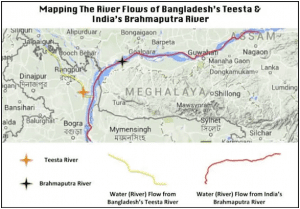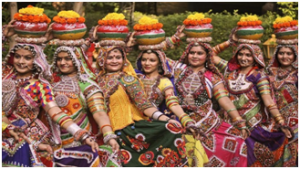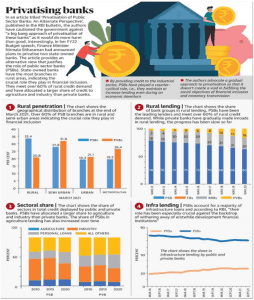THE INDIAN HISTORY
1. WHAT IS THE MANUSMRITI, THE ANCIENT SANSKRIT TEXT RECENTLY UNDER CONTROVERSY
THE CONTEXT: Recently, the Vice Chancellor of Jawaharlal Nehru University criticised the Manusmriti, the ancient Sanskrit text, over its gender bias.
THE EXPLANATION:
What is Manusmriti?
• The Mānavadharmaśāstra, also known as Manusmriti or the Laws of Manu, is a Sanskrit text belonging to the Dharmaśāstra literary tradition of Hinduism.
• Composed sometime between the 2nd century BCE and 3rd century CE, the Manusmriti is written in sloka verses, containing two non-rhyming lines of 16 syllabus each.
• The text is attributed to the mythical figure of Manu, considered to be ancestor of the human race in Hinduism.
• There has been considerable debate between scholars on the authorship of the text.
• Many have argued that it was compiled by many Brahmin scholars over a period of time.
• The Manusmriti is encyclopedic in scope, covering subjects such as:
o the social obligations and duties of the various castes and of individuals in different stages of life,
o the suitable social and sexual relations of men and women of different castes,
o on taxes,
o the rules for kingship,
o on maintaining marital harmony and
o the procedures for settling everyday disputes.
• At its core, the Manusmriti discusses life in the world, how it is lived in reality, as well as how it ought to be.
• The text is about dharma, which means duty, religion, law and practice.
• It also discusses aspects of the Arthashashtra, such as issues relating to statecraft and legal procedures.
• The aim of the text is to present a blueprint for a properly ordered society under the sovereignty of the king and the guidance of Brahmins.
• It was meant to be read by the priestly caste and it would likely have been part of the curriculum for young Brahmin scholars at colleges, and would have been referenced by the scholarly debates and conversations on the Dharmasastras at that time.
It’s significance
• It was the first Sanskrit text to be translated into a European language, by the British philologist Sir William Jones in 1794.
• Subsequently, it was translated into French, German, Portuguese and Russian, before being included in Max Muller’s edited volume, Sacred Books of the East in 1886.
• For colonial officials in British India, the translation of the book served a practical purpose. In 1772, Governor-General Warren Hastings decided to implement laws of Hindus and Muslims that they believed to be continued, unchanged from remotest antiquity.
• For Hindus, the dharmasastras were to play a crucial role, as they were seen by the British as ‘laws,’ whether or not it was even used that way in India.
THE INTERNATIONAL RELATIONS
2. INDIA, BANGLADESH DISCUSS RIVER WATER SHARING ISSUES
THE CONTEXT: Recently, India and Bangladesh discussed a wide range of issues related to the major common rivers such as the Ganga, Teesta and several smaller rivers during the 38th meeting of the Joint River Commission (JRC).
THE EXPLANATION:
• “The JRC meeting, held in a cordial and friendly atmosphere, discussed the whole gamut of the issues related to the common rivers between the two countries, especially the Ganga, Teesta, Manu, Muhuri, Khowai, Gumti, Dharla, Dudkh kumar and Kushiyara”.
• The two sides also discussed exchange of flood-related data and information, river-bank protection works, common basin management, and also the River Interlinking Project of India.
• “Bangladesh side requested for conclusion of the long-pending Teesta Waters Sharing Treaty at an early date. The Indian side assured of their utmost efforts in concluding the agreement”.
About Teesta river:
• Teesta river is a tributary of the Brahmaputra (known as Jamuna in Bangladesh), flowing through India and Bangladesh.
• It originates in the Himalayas near Chunthang, Sikkim and flows to the south through West Bengal before entering Bangladesh.
• The Teesta Barrage dam helps to provide irrigation for the plains between the upper Padma and the Jamuna.
Efforts to resolve the dispute:
• Negotiations on how to share the water have been going on since 1983.
• A 2011 interim deal – that was supposed to last 15 years – gave India 42.5 percent of the Teesta’s waters and gave Bangladesh 37.5 percent. Bengal opposed this deal so it was shelved and remains unsigned.
• Bangladesh sought a fair and equitable distribution of Teesta waters from India, on the lines of the Ganga Water Treaty 1996.
• The treaty is an agreement to share surface waters at the Farakka Barrage near their mutual border.
• In 2015, the Indian Prime Minister’s visit to Dhaka generated expectations to take forward the issue but it still remains unresolved.
• However, In India, individual states have significant influence over transboundary agreements, impeding the policymaking process.
• West Bengalis one of the key stakeholders of the Teesta agreement and is yet to endorse the deal.
Importance of Teesta River:
For Bangladesh:
• Its flood plain covers about 14% of the total cropped area of Bangladesh and provides direct livelihood opportunities to approximately 73% of its population.
For West Bengal:
• Teesta is the lifeline of North Bengal and almost half a dozen of districts of West Bengal are dependent on the waters of Teesta.

THE ENVIRONMENT, ECOLOGY AND CLIMATE CHANGE
3. GOVERNMENT NOTIFIES BATTERY WASTE MANAGEMENT RULES, 2022
THE CONTEXT: Recently, the Ministry of Environment, Forest and Climate Change, Government of India published the Battery Waste Management Rules, 2022 to ensure environmentally sound management of waste batteries.
THE EXPLANATION:
• New rules will replace Batteries (Management and Handling) Rules, 2001.
• The rules cover all types of batteries, viz. Electric Vehicle batteries, portable batteries, automotive batteries and industrial batteries.
• The rules function based on the concept of Extended Producer Responsibility (EPR) where the producers (including importers) of batteries are responsible for collection and recycling/refurbishment of waste batteries and use of recovered materials from wastes into new batteries.
• EPR mandates that all waste batteries to be collected and sent for recycling/refurbishment, and its prohibits disposal in landfills and incineration. To meet the EPR obligations, producers may engage themselves or authorise any other entity for collection, recycling or refurbishment of waste batteries.
• The rules will enable setting up a mechanism and centralized online portal for exchange of EPR certificates between producers and recyclers/refurbishers to fulfil the obligations of producers.
• The rules promote setting up of new industries and entrepreneurship in collection and recycling/refurbishment of waste batteries.
• Mandating the minimum percentage of recovery of materials from waste batteries under the rules will bring new technologies and investment in recycling and refurbishment industry and create new business opportunities.
• Prescribing the use of certain amount of recycled materials in making of new batteries will reduce the dependency on new raw materials and save natural resources.
• Online registration & reporting, auditing, and committee for monitoring the implementation of rules and to take measures required for removal of difficulties are salient features of rules for ensuring effective implementation and compliance.
• On the principle of Polluter Pays Principle, environmental compensation will be imposed for non-fulfilment of Extended Producer Responsibility targets, responsibilities and obligations set out in the rules. The funds collected under environmental compensation shall be utilised in collection and refurbishing or recycling of uncollected and non-recycled waste batteries.
VALUE ADDITION:
IMPORTANCE OF BATTERY RECYCLING:
Batteries are one of many products that should never reach the landfill. Even the most seemingly harmless household battery contains hazardous chemicals which, if allowed to enter the environment, can threaten both animal and human health, and the physical environment.
Benefits of Battery Recycling
• The main benefit of not sending batteries to the bin is that the chemicals they contain will not enter the environment. Another is that well over 55% of a battery can be reused, as its steel, zinc, brass and other materials can be extracted at the recycling facility.
• Recycling batteries also avoids a host of potential environmental problems and hazards, including the pollution of waterways, the leaching of heavy metals from landfills, and exposing the environment to strong acids and lead. The acids in batteries can burn skin and cause significant damage to eye tissue.
• Batteries sent to the landfill can also combust due to high waste temperatures, which can release toxins into the air and be very dangerous for landfill employees.
4. WHAT IS ‘ARTH GANGA’, GOVT’S NEW MODEL FOR THE RIVER’S SUSTAINABLE DEVELOPMENT
THE CONTEXT: Recently, the Director General of the National Mission for Clean Ganga, spoke about the Arth Ganga model during his virtual keynote address to the Stockholm World Water Week 2022.
THE EXPLANATION:
• It was first introduced during the first National Ganga Council meeting in Kanpur in 2019, where it was urged to have a shift from Namami Gange, the Union Government’s flagship project to clean the Ganga, to the model of Arth Ganga.
• Arth Ganga focuses on the sustainable development of the Ganga and its surrounding areas, by focusing on economic activities related to the river.
• At its core, the Arth Ganga model seeks to use economics to bridge people with the river.
• It strives to contribute at least 3% of the GDP from the Ganga Basin itself.
• The Arth Ganga project’s interventions are in accordance with India’s commitments towards the UN sustainable development goals.
SIGNIFICANCE:
• Under Arth Ganga, the government is working on six verticals.
• The first is Zero Budget Natural Farming, which involves chemical-free farming on 10 km on either side of the river, and the promotion of cow dung as fertiliser through the GOBARdhan scheme.
• The Monetization and Reuse of Sludge & Wastewater is the second, which seeks to reuse treated water for irrigation, industries and revenue generation for Urban Local Bodies (ULBs).
• Arth Ganga will also involve Livelihood Generation Opportunities, by creating haats where people can sell local products, medicinal plants and ayurveda.
• The fourth is to increase public participation by increasing synergies between the stakeholders involved with the river.
• The model also wants to promote the cultural heritage and tourism of Ganga and its surroundings, through boat tourism, adventure sports and by conducting yoga activities.
• Lastly, the model seeks to promote institutional building by empowering local administration for improved water governance.
POINTS TO REMEMBER:
Since 1991, the Stockholm International Water Institute has been organising the World Water Week every year to address global water concerns.
VALUE ADDITION:
The GOBAR-Dhan scheme
• Ministry of Drinking Water & Sanitation has launched the GOBAR (Galvanizing Organic Bio-Agro Resources) – DHAN scheme.
• The scheme is being implemented as part of the Swachh Bharat Mission (Gramin).
• The scheme aims to positively impact village cleanliness and generate wealth and energy from cattle and organic waste.
• The scheme also aims at creating new rural livelihood opportunities and enhancing income for farmers and other rural people.
• The GOBAR-DHAN scheme, with its focus on keeping villages clean, increasing the income of rural households, and generation of energy from cattle waste, is an important element of this ODF-plus strategy.
THE GOVERNMENT SCHEMES AND INTERVENTIONS
5. EXPLAINED: THE ONE NATION ONE FERTILISER SCHEME, THE GOVT’S LOGIC, AND SOME IMMEDIATE RISKS
THE CONTEXT: Recently, the Ministry of Chemicals and Fertilizers announced that it has been decided to implement One Nation One Fertilizer by introducing a Single Brand for Fertilizers and Logo under the fertilizer subsidy scheme named “Pradhan mantri Bhartiya Janurvarak Pariyojna” (PMBJP).
THE EXPLANATION:
What is the government’s argument for introducing this scheme?
• The government’s logic for introducing a single ‘Bharat’ brand for all subsidised fertilisers being marketed by companies are:
• The maximum retail price of urea is currently fixed by the government, which compensates companies for the higher cost of manufacturing or imports incurred by them.
o The MRPs of non-urea fertilisers are, on paper, decontrolled.
o But companies cannot avail of subsidy if they sell at MRPs higher than that informally indicated by the government.
o Simply put, there are some 26 fertilisers (inclusive of urea), on which government bears subsidy and also effectively decides the MRPs;
• Apart from subsidizing and deciding at what price companies can sell, the government also decides where they can sell.
o This is done through the Fertilizer (Movement) Control Order, 1973.
o Under this, the department of fertilizers draws an agreed monthly supply plan on all subsidized fertilizers in consultation with manufacturers and importers.
o The department also regularly monitors movement to ensure fertilizer availability as per requirement, including remote areas.
• When the government is spending vast sums of money on fertilizer subsidy (the bill is likely to cross Rs 200,000 crore in 2022-23), plus deciding where and at what price companies can sell, it would obviously want to take credit and send that message to farmers.
What can be the drawbacks of the scheme?
• It will disincentivize fertilizer companies from undertaking marketing and brand promotion activities.
• They will now be reduced to contract manufacturers and importers for the government.
• Any company’s strength ultimately is its brands and farmer trust built over decades.
• Currently, in case of any bag or batch of fertilizers not meeting the required standards, the blame is put on the company.
• But now, that may be passed on fully to the government.
• Politically, the scheme might well boomerang rather than benefit the ruling party.
THE PRELIMS PERSPECTIVE
6. THE NOMINATION OF GARBA DANCE TO UNESCO HERITAGE LIST
THE CONTEXT: After Durga Puja was included in UNESCO’s Intangible Cultural Heritage last year, India has now named Garba for the year 2022. If approved, it will become the first intangible cultural heritage of Gujarat to be listed by UNESCO.
THE EXPLANATION:
What is Garba?
• Garba is a form of dance, as well as a religious and social event. It originated in the villages of Gujarat, where it was performed in communal gathering places in the center of the village which was attended by the entire community. In Gujarat, it is celebrated with nine nights of dance as a form of worship and worship. Garba is also performed during social events like weddings and parties.
About the list of intangible cultural heritage of UNESCO
• UNESCO’s prestigious list is made up of intangible heritage elements that help to showcase the diversity of cultural heritage and raise awareness of its importance.
• It was established in 2008 after the Convention for the Protection of Intangible Cultural Heritage, 2003 came into force.
• It compiles two lists viz. Representative List of the Intangible Cultural Heritage of Humanity and the List of Intangible Cultural Heritage in Need of Urgent Protection.
List of Intangible Cultural Heritage of Humanity from India
Since 2008, 14 intangible cultural heritages from India have been listed by UNESCO. It includes-
• Sanskrit Theater of Kudiyattam, Kerala
• Mudiyet, a ritual theater and dance drama from Kerala
• Tradition of Vedic Mantras;
• ‘Ram Leela’ (traditional performance of Ramayana)
• ‘Ramman’ (a religious festival and ritual theater of Garhwal, Uttarakhand)
• Kalbelia Folk Songs and Dances of Rajasthan
• Chhau Dance (Classical dance of West Bengal and Odisha)
• Buddhist chanting of Ladakh
• Sankirtana (a ritual singing, drumming and dance of Manipur)
• Traditional brass and copper craft of pottery amidst the laughs of Jandiala Guru, Punjab
• Yoga
• Nowruz
• Kumbh Mela
• Durga Puja (represents the collective worship of the Hindu goddess Durga)
THE DATA POINT


